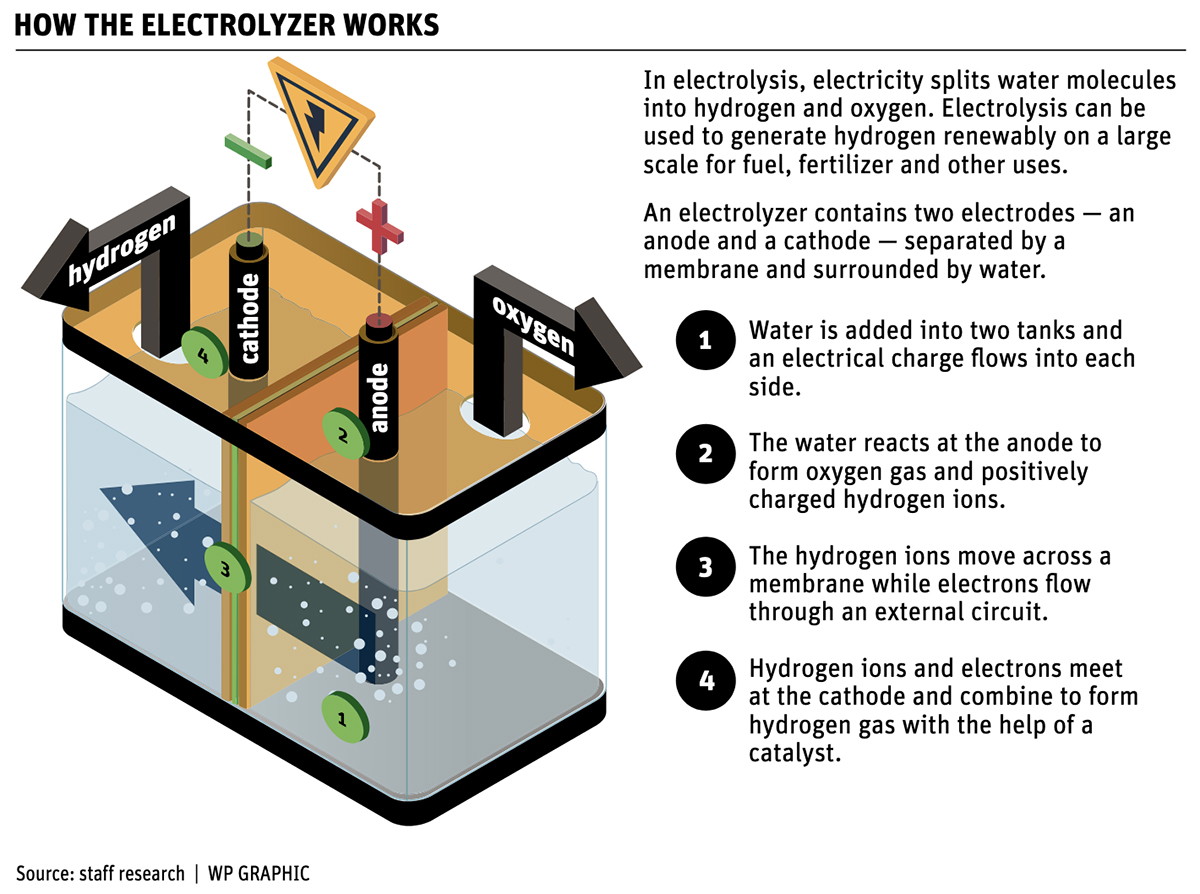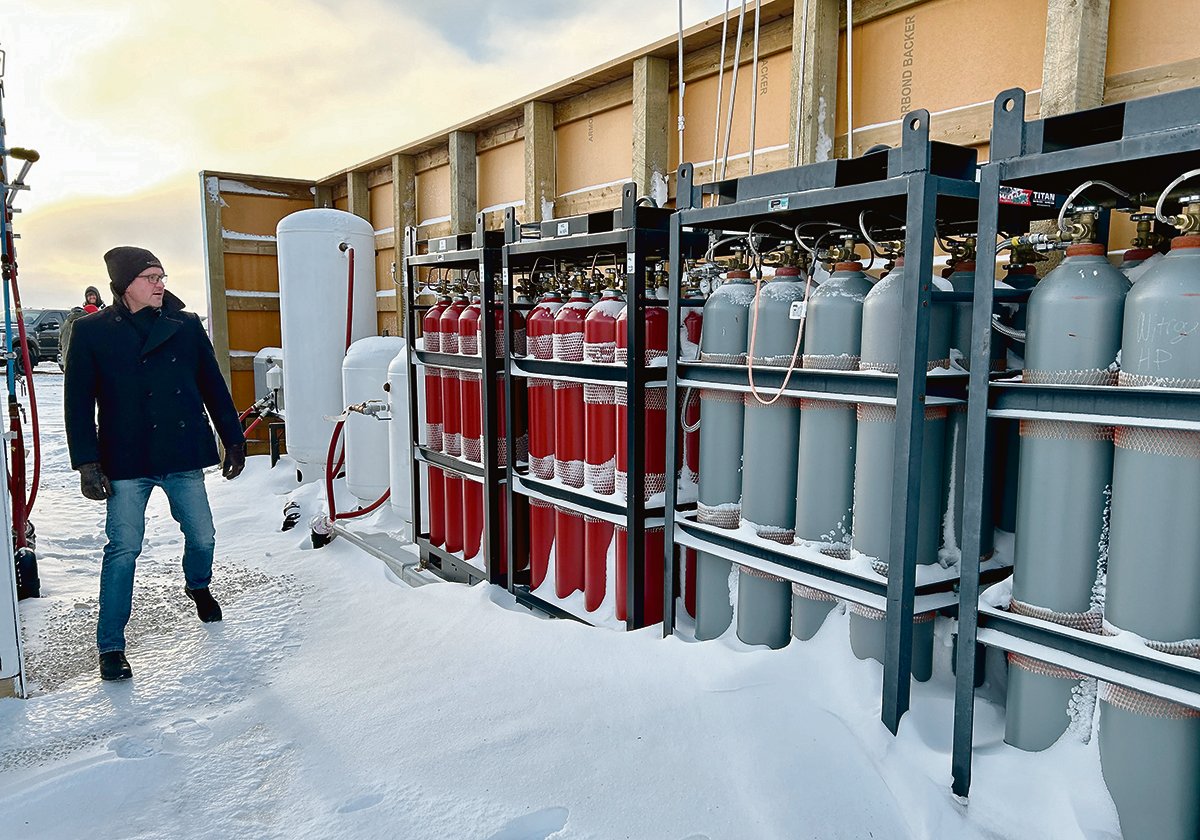Company builds an on-farm plant that will allow the farmer to produce 25 per cent of his green ammonia requirements and gain control over of what can be volatile prices for the fertilizer
SPERLING, Man. — Twenty farmers, agronomists and academics recently gathered on a farmyard near Sperling, Man., to look at six or seven shipping containers that house a unique technology.
The equipment can convert electricity into anhydrous ammonia, allowing farmers to produce their own nitrogen fertilizer.
Ian Clifford, co-founder of FuelPositive, the Canadian company that developed the system, explained why this technology could change how fertilizer is produced.
Related stories:
“This is the first system of its kind.…. (It) is now 95 per cent commissioned. It’s ready to turn on,” said Clifford.
Read Also

Gene editing digs deeper space in Canadian plant breeding
More Canadian research into crop variety development is incorporating gene editing, and one researcher notes that Canada’s regulatory approach to gene editing will help drive innovation
FuelPositive is hoping to disrupt the fertilizer business by selling producers the technology to produce ammonia on their farm.
The final product is known as “green ammonia” because the electricity that powers the system is renewable. In Manitoba, the green source of power is hydroelectricity.
Clifford summarized how it works in a three-minute, bite-sized summary:
The electricity powers an electrolyzer, which separates water into hydrogen and oxygen.

Inside another container, there is technology that pulls nitrogen out of the atmosphere through an absorption process.
The nitrogen and hydrogen are then combined under pressure to produce ammonia.
The ammonia is stored in a tank next to the shipping containers.
The pilot plant near Sperling can produce 100 tons of anhydrous ammonia per year. That’s not enough fertilizer to supply Curtis Hiebert, a grain farmer who seeds about 11,000 acres per year. The 100 tons represents 20 to 25 per cent of his annual needs.
Hiebert partnered with FuelPositive to install the ammonia production system on his farm for a couple of reasons.
During the pandemic he couldn’t get a sufficient and timely delivery of fertilizer to his farm, which was frustrating.
And like every farmer, Hiebert gets annoyed by the wild price swings for nitrogen fertilizer.
“The market influence, this is one that bothers me the most,” said Hiebert, who spoke at a green ammonia workshop in Sperling following the tour of the system on his farm.
When the price of corn goes up, the manufacturers of nitrogen fertilizer raise their prices, Hiebert said.
“When natural gas price goes down, they don’t follow that. They’re looking at the corn price,” he said.
“Why I like this system, is we can get control of some of those costs.”
Clifford, who also spoke at the workshop, agreed with Hiebert about variable fertilizer prices.
He said FuelPositive’s mission is to help farmers get control over the cost of a crop input that “is out of (their) control.”
The system at Hiebert’s farm is not operational yet. FuelPositive still needs a couple of permits, and Clifford is seeking an injection of capital.
The public firm is listed on the TSX Venture exchange.
“Our big focus as a company … is to raise the last piece of equity capital … so we have a six to eight month runway, so we can turn the system on, know we can run it through before we start taking orders for systems,” said Clifford, who co-founded FuelPositive with his wife, Luna.
They live on Cape Breton Island in Nova Scotia but spend a great deal of time in Manitoba.
Other producers are interested in on-farm fertilizer production, but they want to see it working and talk to Hiebert about the technology, Clifford said.
“Once the Hiebert system is up and running, we expect we’ll have early-adopter farmers making commitments to the system,” he said.
“With that, we can build our manufacturing plant.”
FuelPositive plans to construct its green ammonia systems in Manitoba and initially sell them to local farmers.
The province is an ideal place for FuelPositive to market its ammonia production systems because 98 per cent of Manitoba’s power comes from hydroelectric dams and wind.
Plus, anhydrous is a popular nitrogen fertilizer in the province.
FuelPositive is committed to producing green ammonia and will sell the technology only to farmers who can power the system with renewable electricity.
In the near term, scaling up the business and building a manufacturing plant will require a decent pile of cash.
Clifford is hoping Manitoba’s NDP government will “support the growth of FuelPositive.”
“Mainly because it’s going to create a lot of amazing jobs, and it’s going to support farmers throughout the province,” he said.
“Let’s make Manitoba a centre of excellence for this kind of technology. Then let’s export that Canadian technology … around the world.”
















